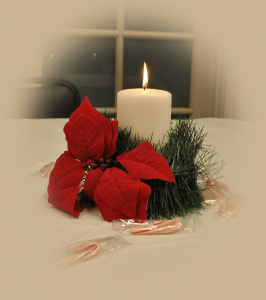Winter Solstice, also known as Yule, is the Norse-Teutonic Feast of the New Year and of the Ancestors. Like the Celtic Feast of Samhain it is a time between the old and the new year. This feast was celebrated by the Celts in later times, however, probably only because of Norse influence.
This celebration lasts between twelve and thirteen days, beginning on the eve of the Winter Solstice. The eve of the Solstice is revered as the most spiritual and powerful of the thirteen nights. Yule logs were burnt on Solstice night and the folk kept watch. Vigilance was necessary because on this night the trolls, mound alfs, and the dead were a common occurrence and would often come into human homes.
The last night of Yule was also an extremely important time. It is believed that what is spoken on this night, as well as one’s actions on this eve, would set the course of events for the new year to come.
To the Norse-Teutonic people this was the highest and most holy time of the year, a time of greatest power. The Winter Solstice marks the longest night and shortest day of the year, when darkness is most influential. Yule is a time for celebrating death and rebirth.
All worlds meet in Midgard or Middle Garth at Yuletide. The Gods, Goddesses, and the dead can walk freely among the living. Yule is a time of great feasting and joy for our Ancestors. The entire clan, both living and dead, could gather as one at Yule. The Teutonic people believed that the living could also leave their bodies during Yule and join the Wild Hunt. Woden with his consort Holda lead the Wild Hunt at Yule.
Traditional customs of the season include: decorating evergreen trees, caroling, Yule logs, mistletoe, holly, as well as the giving of gifts. Mound alfs are said to be especially fond of holly. Homes are often decorated with evergreens during Yule. The Yule log and evergreen trees stand as a promise of living through the Winter and a reminder of the coming Spring. Fruit bearing trees are also important at this time. The ancients performed rituals to ensure a bountiful fruit harvest for the coming year. The apple and yew trees were especially symbolic of life through death.
For the modern Neo-Pagan, Yule continues to be a time to celebrate the rebirth of the sun, as we decorate our homes with greenery and lights, give gifts, and enjoy a good bowl of wassail with family and friends.

